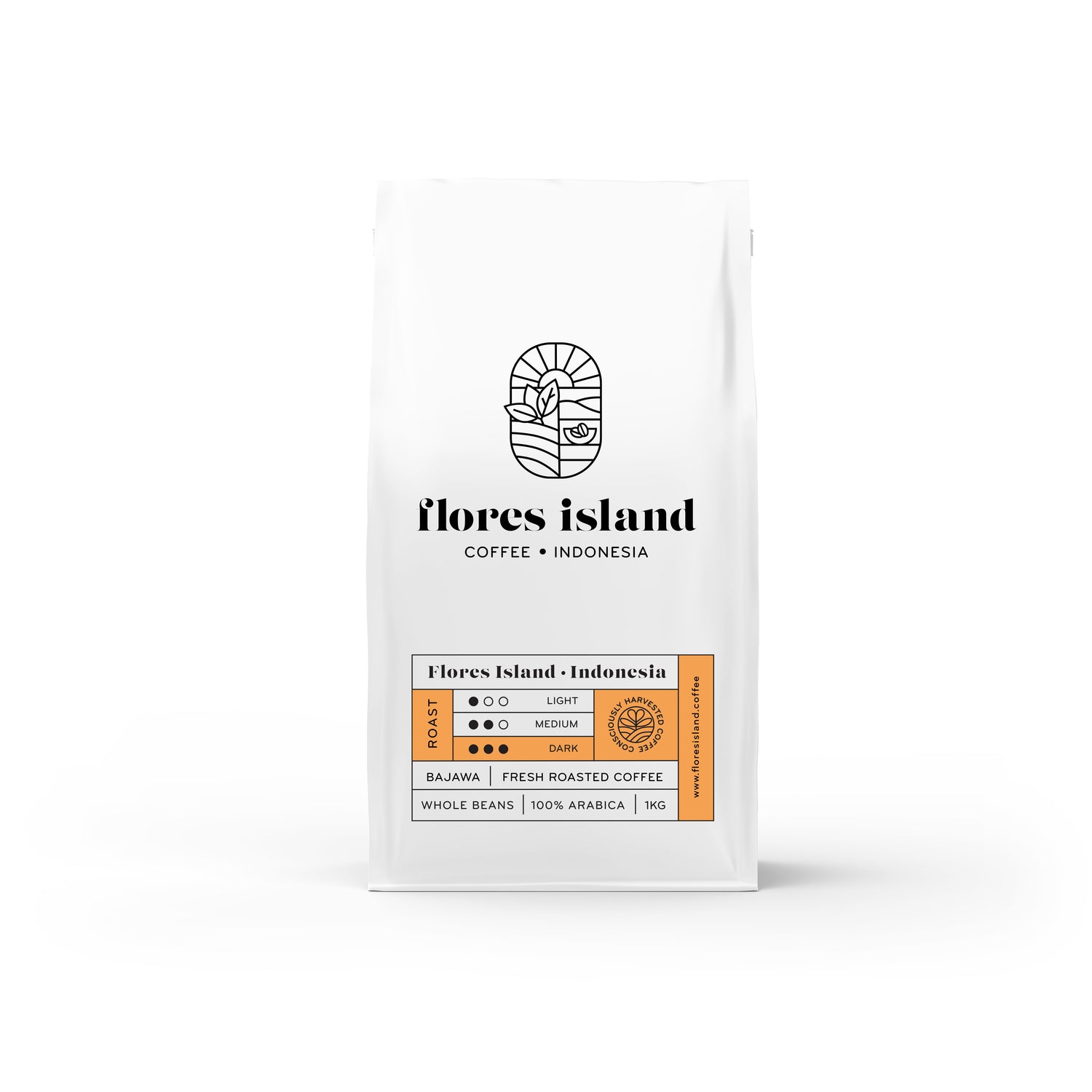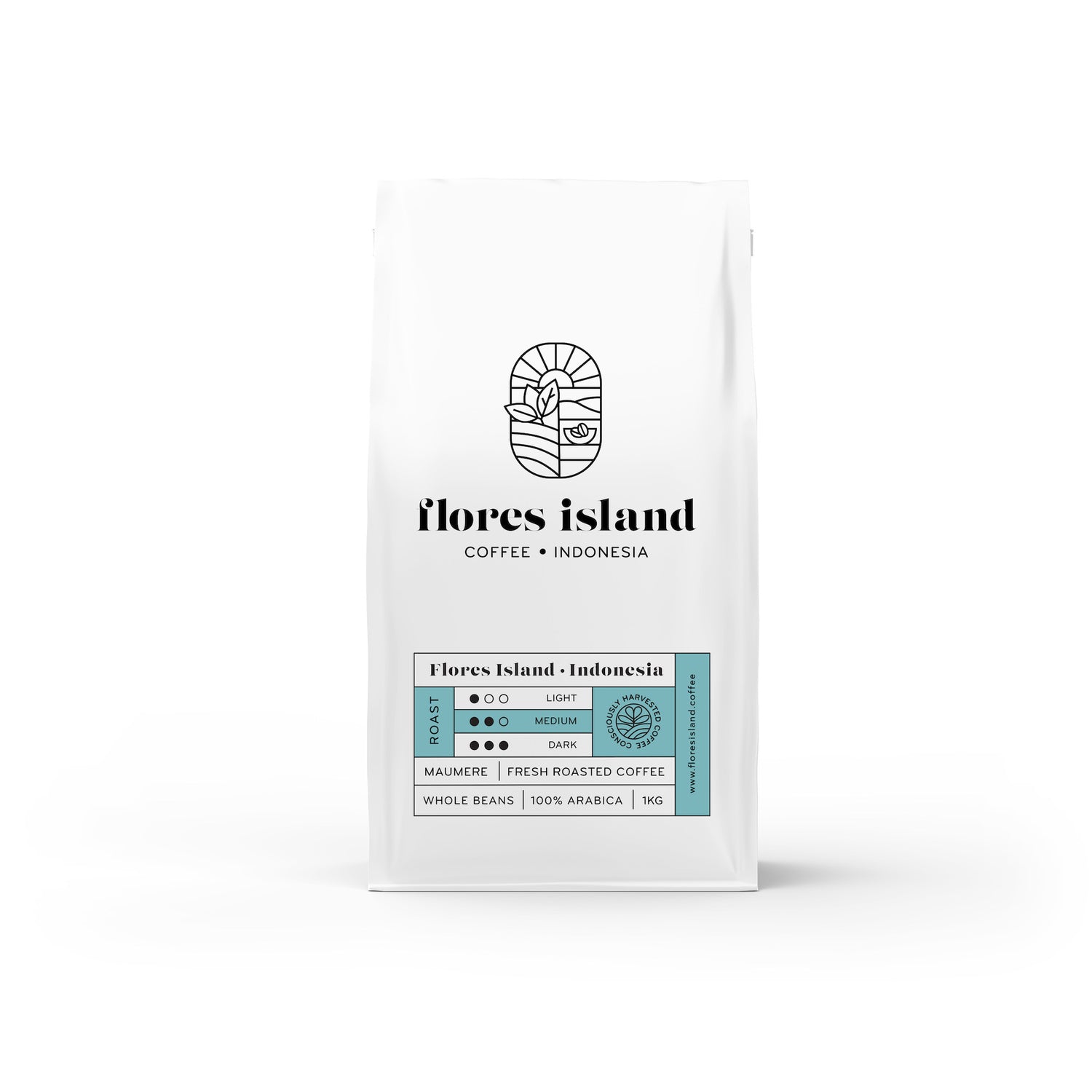Flores Island is part of Nusa Tenggara Timur (NTT). Of Indonesia‘s 38 provinces, only Nusa Tenggara Barat (NTB) and Papua has a lower Human Development Index (HDI) ranking (BPS, 2012). In Flores Robusta production volumes are nearly twice that of Arabica. In cultivating new interest from international coffee buyers there are opportunities for investment within development and value adding of Robusta production, alongside Arabica, to support national objectives in poverty alleviation and livelihoods transformation.
At the low end, an estimated 2,500 tons of Arabica, and 4,000 tons of Robusta, is produced annually on Flores from two coffee districts, Manggarai and Bajawa. Production estimates are conflicting at best, derived from various sources over different timelines. The production estimates described here are based on tree counts, and using standard planting distances (2.5m by 2.5m for Arabica and 3m by 3m for Robusta) to calculate principal areas under cultivation. (Coffee based livelihoods in Flores, Indonesia Jeffrey Neilson The University of Sydney Technical Report · May 2013)
These estimates do not consider other areas of the island, particularly in the east of Flores where Robusta and Arabica are both cultivated, often on the same slopes, by the same farmers at different altitudes.

Robusta coffee volumes in Flores Island reflect the preference of smallholder farmers. It’s a practical agricultural response, Robusta is naturally hardy and resistant due to its high level of caffeine, double that of arabica. It has a naturally high yield without inputs, can be a plant-and-forget option with a long lifespan, as opposed to arabica coffee and significantly more pest resistant. The opportunity for the farmer with Robusta is less effort, higher yields.

Robusta beans can have as much as 80% more caffeine than arabica beans. 2.7% of the bean is caffeine, compared to arabica's 1.5%. This makes Robusta beans optimal for manufacturing of caffeine-rich instant coffee and coffee-based energy or nootropic beverages.
Arabica coffee is currently the world's most popular coffee type, equating to over 60% of cups consumed.
Arabica and Robusta differ when it comes to their optimal growing environments.
Robusta coffee beans:
- resilient plant that can be grown at low altitudes of 200-800 meters.
- low susceptible to pests' damage
- produce more finished products per acre
- relatively low production costs.
Arabica coffee beans:
- needs to be grown at a higher elevation (600-2000 meters)
- fragile and must grow in cool, subtropical climates
- need a lot of moisture, rich soil, shade, and sun.
- vulnerable to attack from various pests
- can be damaged by cold temperatures or poor handling.
Robusta market growth is constrained by perception of flavours and quality in comparison to Arabica, however ascribing a single flavour profile to Robusta beans is impossible because Robusta is grown worldwide. Robusta beans contain higher antioxidant properties and have 60% less sugar and fats than arabica beans, which makes them a bolder and stronger brew, often with earthier flavours like nuts and chocolate and deeper mouthfeels.
With climate change exacerbating agricultural production globally, coffee will become more difficult to cultivate in many locations across the world, with threats from rising temperatures and changing soils. Leading coffee companies have generally been slow to respond to the effects of climate change on the arabica supply chain and or to innovate.
In Vietnam, Robusta coffee is considered the future of their coffee industry. Naturally more pest resistant because it has more caffeine, a natural pest repellent with the flexibility to grow in a wide array of climates and altitudes whereas arabica requires very specific growing conditions.
A few key coffee producing countries are now changing their attitude towards Robusta coffees. Costa Rica, has repealed a 30-year ban on the production of Robusta varieties. Colombia (one of the world’s largest producers of Arabica) and where the government and major industry actors give little incentive for Robusta production, coffee diversification is building up and at lower altitudes farmers are now experimenting with Robusta.
Production quality control and roasting innovation will be key in supporting development of smallholder Robusta opportunities. Light-roasted Robusta coffees have been shown to allow Robusta’s flavours and aromas to be better expressed into the speciality segment. On the other hand we can anticipate roasters will find it difficult to source high-quality Robusta beans as few speciality importers carry the product. Meantime, at the farm level, incentives to improve quality are very low in terms of price.
Arabica is given far more investment of time and resources than Robusta throughout the supply chain, which can be expected to have a knock on effect on cupping. Weak agricultural practices in cultivating, picking, drying, storage and especially in post-harvest processing will affect the quality of all coffee. Simple fixes for Robusta such as picking ripe cherries (selective picking), raised drying beds and good storage facilities may make a significant difference without significant capital investment.

The Coffee Quality Institute (CQI) notes that “Robusta is often overlooked because of its traditionally unfavorable cupping quality, which traces directly to the way it is processed. Oftentimes, Robusta beans are traded with hundreds of defects and their cupping quality has not been a priority. But what if it is processed properly? The impact could be huge on not only the farmers producing it, but every party in the supply chain.”
The reality at farm level is despite the theory that given the same level of investment, care and attention as Arabica, that Robusta would result in higher cupping scores, to unlock a better market opportunity is academic if farmers have little price incentive to improve quality. On the other hand these low prices are a powerful argument for early industry movers to support the development of fine Robusta at farm level and contribute to its place in the specialty coffee industry.
Millions of farmers around the world already grow Robusta as a livelihoods crop and any improvement in quality is likely to result in better prices and incomes for these farmers including Flores Island coffee farmers.











